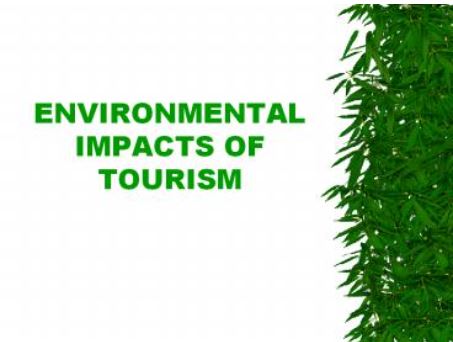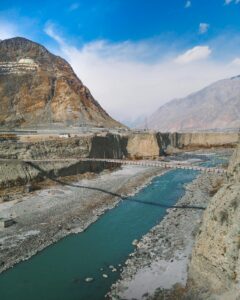Introduction
In today’s world, how can we reduce the environmental impact of tourism? As global travel becomes more accessible, the pressure on natural ecosystems, cultural heritage sites, and local communities continues to grow. While tourism brings economic benefits and fosters cultural exchange, it also contributes to pollution, habitat destruction, and carbon emissions — especially when it’s not managed responsibly. The good news is that both travelers and the tourism industry can play a role in making travel more sustainable. From the way we plan our trips to the products we pack and the services we support, every choice matters. In this blog post, we’ll explore practical steps individuals and tour operators can take to travel more responsibly — including the use of eco-friendly travel gear, support for green businesses, and promotion of low-impact tourism practices.
Table of Contents
Understanding the Environmental Impact of Tourism
Tourism has long been seen as a positive economic force, bringing in revenue, creating jobs, and promoting cultural exchange. However, it also has significant environmental consequences that can’t be ignored. With millions of tourists traveling around the world every year, the cumulative impact on the planet is substantial. From carbon emissions to waste generation, tourism touches nearly every aspect of the environment, often in ways that are invisible to the average traveler.

In this section, we’ll take a closer look at the major environmental effects of tourism and why it’s crucial to adopt sustainable travel practices.
Common Negative Effects
Tourism, while beneficial to local economies, can often contribute to environmental degradation. Some of the most common negative effects include:
1. Carbon Emissions from Transportation
The transportation sector — particularly air travel — is a major contributor to global warming. Commercial flights, buses, and cars all emit carbon dioxide (CO2), a greenhouse gas that accelerates climate change. For example, long-haul flights account for a significant portion of global carbon emissions, with the aviation industry responsible for roughly 2.5% of global emissions.
In Pakistan, domestic travel by bus or car also increases carbon footprints, especially in areas with limited public transportation infrastructure.
2. Waste Generation and Pollution
Tourists often produce large amounts of waste, much of which is non-biodegradable. Single-use plastics like water bottles, straws, and food packaging are commonly discarded in tourist areas, contributing to the growing pollution problem. In popular destinations like Skardu, Hunza, and Fairy Meadows, these waste items can accumulate rapidly, polluting pristine landscapes and threatening local wildlife.
Plastic waste doesn’t just affect the beauty of natural surroundings, it also harms animals. Marine creatures, birds, and land animals mistake plastic for food, leading to dangerous consequences for wildlife.
3. Overconsumption of Natural Resources
In tourist-heavy areas, the demand for resources like water, electricity, and food rises sharply. Hotels, resorts, and restaurants often consume more water and energy per capita than the local population, putting pressure on natural resources that may already be scarce.
For example, in areas like Chitral and Kalash, where water supply can be limited, heavy tourist demand for water can lead to shortages for local communities, exacerbating existing challenges.
4. Habitat Disruption and Ecosystem Damage
The expansion of tourism infrastructure — including hotels, roads, and attractions — can significantly disrupt local ecosystems. In many cases, tourism can lead to habitat destruction for wildlife. For example, the construction of large resorts on coastal areas or in mountainous regions can lead to deforestation, soil erosion, and loss of biodiversity.
In Pakistan, areas like the Margalla Hills National Park and the Deosai National Park have witnessed damage from unregulated tourism, which impacts the natural habitats of countless plant and animal species.
5. Cultural Erosion
Tourism can also have cultural consequences. The influx of visitors often leads to commercialization of traditional practices, disrupting local customs and values. When tourists overrun a region, they may inadvertently dilute or change the very culture that makes the area unique.
In areas like the Kalash Valley, where local traditions have remained relatively untouched for centuries, the growing popularity of eco-tourism presents a delicate balancing act. While tourism brings economic benefits, it can also lead to the erosion of indigenous cultures and practices if not managed responsibly.
Practical Ways to Reduce the Environmental Impact of Tourism
1. Stay at Environmentally Responsible Lodgings
When it comes to eco-friendly travel, where you stay matters. Eco-conscious accommodations are designed to reduce waste, conserve energy, and operate sustainably, all while offering a comfortable experience.

Features of a Green Stay:
- LED lighting and energy-efficient appliances
- Rainwater harvesting and low-flow fixtures
- Composting and recycling programs
- Solar-powered energy or wind alternatives
- Locally sourced meals and organic toiletries
In areas like Hunza and Skardu, you’ll find boutique hotels and lodges that emphasize low-impact living and green building design. These places often support nearby communities, use renewable energy, and reduce plastic use..
2. Cut the Plastic: Travel Light, Travel Right
Single-use plastics are everywhere – from airport food packaging to hotel freebies. These items often end up in the environment, harming ecosystems and wildlife.
Smart Swaps for Greener Travel:
- Carry a reusable water bottle (consider one with a filter) – Check on Amazon
- Use cloth or mesh shopping bags
- Pack bamboo toothbrushes and shampoo bars
- Replace disposable cutlery with stainless steel or bamboo sets – Find great travel kits at Life Without Plastic
Brands like Eco Bravo and Life Without Plastic make it easier to say no to single-use waste by offering eco travel kits that are lightweight, reusable, and chemical-free.
3. Buy Local, Buy Sustainable
Tourism thrives when local communities benefit directly. One of the best ways to support the places you visit is by purchasing handmade, eco-conscious goods made by local artisans.
What Makes a Purchase Sustainable:
- Crafted using renewable or recycled materials
- Reflects local culture and traditions
- Produced through fair trade or ethical labor practices
- Uses minimal or plastic-free packaging
In Pakistan, places like Chitral and Gilgit-Baltistan offer beautiful handcrafted items made from wool, wood, and stone—materials that are both natural and biodegradable.
4. Offset Your Carbon Footprint With Green Projects
No matter how eco-conscious we are, travel has an environmental cost. Whether it’s from flights, road trips, or digital usage, we leave a carbon footprint. Thankfully, we can balance it out by supporting reforestation or renewable energy efforts.
How to Offset Responsibly:
- Use platforms like CarbonFootprint.com to measure your trip emissions
- Donate to tree-planting and conservation projects
- Choose green businesses that offset emissions automatically
If you run a travel blog or website, you can go a step further by using Reforest Hosting — a web host that plants trees for every customer. It’s a smart way to reduce your digital carbon impact while promoting green values online.
5. Follow Nature’s Rule: Leave No Trace
Responsible tourism means leaving the environment as you found it – or better. The “Leave No Trace” principles help travelers reduce their environmental and ethical footprint, especially when visiting natural landscapes.

Key Principles to Practice:
- Pack out what you pack in – Don’t leave trash behind
- Stay on marked trails to protect fragile plants and soil
- Don’t disturb wildlife or their habitats
- Use eco-friendly gear like solar chargers and biodegradable soap – Browse travel gear on Amazon
Following these practices ensures that the pristine valleys, lakes, and forests of Pakistan remain untouched for generations to come.
Recommended Eco-Friendly Travel Products (Amazon Picks)
Traveling sustainably isn’t just about where you go — it’s also about what you pack. Choosing the right eco-friendly travel gear can significantly reduce your environmental footprint. By investing in reusable, plastic-free, and energy-efficient products, you help protect the planet while enjoying a smoother, more responsible journey.
Here are some highly recommended eco-friendly travel products that every conscious traveler should consider:
1. Reusable Water Bottles with Filters
Plastic water bottles are one of the most common sources of waste during travel. A high-quality, reusable water bottle, especially one with a built-in filter, helps you stay hydrated without generating plastic waste.
- Why it’s eco-friendly: Cuts down on single-use plastic
- Best for: Hiking, road trips, city tours
- Where to get it:
Pro Tip: Opt for bottles with activated carbon filters so you can safely refill from natural water sources.
2. Travel Cutlery and Zero-Waste Kits
Whether you’re grabbing street food or eating at local cafes, having your own reusable utensils and food containers helps you avoid single-use plastics on the go.
- What to look for: Bamboo cutlery, stainless steel straws, compact food containers, cloth napkins
- Recommended from:
Pack a small drawstring bag with your utensils, reusable straw, and napkin so you’re always prepared.
3. Solid Toiletries & Biodegradable Soap
Most conventional toiletries come in plastic bottles and often contain harmful chemicals. Switch to solid or refillable options made with natural ingredients.
- Essentials: Shampoo bars, conditioner bars, body wash bars, deodorant sticks
- Why they’re better: Zero plastic waste, no spills, last longer
- Where to buy:
Tip: Solid toiletries are TSA-friendly and perfect for carry-on bags.
4. Solar-Powered Chargers and Battery Packs
Using renewable energy sources while traveling is a great way to reduce reliance on fossil fuels. Solar chargers allow you to power up your devices without tapping into the grid.
- Perfect for: Backpacking, camping, off-grid adventures
- Top picks:
Bonus: Look for models with dual USB ports so you can charge multiple devices at once.
5. Reusable Shopping Bags and Travel Organizers
Instead of using plastic bags at stores or markets, carry a foldable, reusable shopping bag. They’re lightweight, washable, and perfect for groceries, laundry, or day trips.
- Extras to pack: Cloth produce bags, packing cubes, reusable zipper bags
- Where to find:
Choose bags made from organic cotton or recycled polyester for maximum impact.
How Tour Operators Can Promote Green Tourism
Tour operators play a powerful role in shaping the way people travel. With the right practices, they can not only reduce the environmental impact of tourism but also educate travelers and support local ecosystems. By adopting sustainable strategies, tour companies can contribute to a greener future while offering more meaningful experiences to their clients.
Here’s how tour operators can actively promote green tourism:
1. Design Low-Impact Itineraries
Tour operators should create itineraries that minimize harm to natural habitats and cultural sites. This means avoiding over-touristed areas during peak times, limiting group sizes, and choosing eco-conscious destinations.
Sustainable itinerary tips:
- Prioritize off-the-beaten-path destinations to reduce overtourism
- Partner with eco-certified hotels and restaurants
- Allow time for cultural immersion and nature appreciation
- Limit transportation-related emissions with optimized routes
2. Educate and Engage Tourists
Travelers often rely on tour guides to understand the cultural and environmental value of the places they visit. Tour operators can use this opportunity to promote eco-awareness by sharing information about sustainability, local wildlife, and conservation efforts.
Ideas for educating tourists:
- Include sustainability briefings at the start of tours
- Provide eco-friendly welcome kits (reusable bottles, bamboo utensils)
- Highlight the importance of reducing plastic and waste
- Encourage responsible wildlife viewing practices
3. Partner with Eco-Friendly Businesses
To ensure every part of the tour supports sustainability, operators should collaborate with businesses that align with green values. This includes transportation companies, accommodations, gear providers, and activity partners.
Examples:
- Book lodgings that are certified green or solar-powered
- Use hybrid or electric vehicles for transportation
- Source gear or merchandise from eco-conscious brands like Eco Bravo or Life Without Plastic
- Host websites with green services like Reforest Hosting, which offsets carbon by planting trees
4. Reduce Single-Use Plastics on Tours
One major area of concern in group travel is plastic waste. Tour operators can take simple but effective steps to minimize the use of disposable items.
How to reduce plastic usage:
- Provide reusable water bottles or offer filtered water stations
- Avoid plastic-wrapped meals and single-use utensils
- Use compostable or reusable packaging for lunch packs and souvenirs
This not only reduces waste but also reinforces a company’s environmental values to customers.
5. Support Local and Sustainable Communities
Green tourism is not just about protecting nature — it’s also about empowering communities. Tour operators can source experiences, food, and services from local suppliers that use sustainable practices.
Support local by:
- Hiring local guides and instructors
- Offering tours to community-run conservation or farming projects
- Promoting local craft markets and eco-friendly souvenirs
- Organizing volunteer days or eco-project participation for tourists
This creates jobs, reduces leakage of tourism revenue, and gives travelers authentic, grounded experiences.
6. Use Digital Tools and Green Hosting
Digital tools help tour operators stay efficient and paper-free. But even digital infrastructure has a carbon footprint. Hosting your tour booking or information website on eco-conscious platforms, like Reforest Hosting, ensures that even your online presence supports a greener planet.
Steps to take:
- Use paperless booking systems
- Send digital itineraries and receipts
- Host on servers that are powered by renewable energy and offset emissions through reforestation projects
Final Thoughts: Embracing Sustainable Tourism for a Better Future
Reducing the environmental impact of tourism is not just the responsibility of governments or large travel companies — it’s a collective effort that includes travelers, tour operators, and businesses at every level. Whether you’re hiking through the mountains of northern Pakistan, exploring coastal regions, or visiting heritage sites, your choices matter. From using eco-friendly travel gear to supporting green tour operators, choosing sustainable accommodations, and reducing plastic waste, there are countless ways to make a difference. Simple changes — like packing reusable items from platforms like Life Without Plastic, choosing plastic-free products from Eco Bravo, or even hosting your travel blog or business on Reforest Hosting — all contribute to a cleaner, healthier planet.
FAQ
Q1. How can I travel more sustainably?
Use reusables, avoid plastic, stay in eco-friendly places, and choose low-emission transport.
Q2. How do tour operators reduce impact?
They offer green tours, support locals, reduce waste, and work with eco-conscious partners.
Q3. Why does this matter?
It protects nature, cuts pollution, and keeps destinations beautiful for future travelers.




